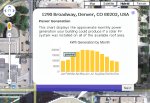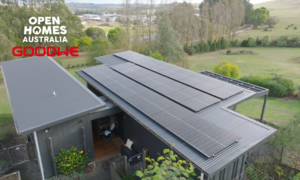A new online mapping system which allows property owners considering install solar power systems on their buildings to calculate exactly how much energy they will produce and how much money a system will save them has been launched for the U.S. region of Denver, Colorado.
The Denver Regional Solar Map, a new website developed by the Denver Regional Council of Governments (DRCOG), joins similar online tools several US states have to promote the benefits of solar photovoltaic (PV) systems.
The site allows homeowners and property developers to work out the optimum size of any solar power system they wish to install, and provides users with links to local installers. The site is designed to encourage more uptake of solar panels in the region and to fuel job growth, according to DRCOG executive director, Jennifer Schaufele.
“DRCOG is extremely proud of this effort because it meshes public – and private sector talents to meet the economy’s critical need of job creation. It also demonstrates solar energy’s potential for more sustainable communities”, she said.
Using information gathered by the Colorado Solar Energies Industries Association (COSEIA), the Solar Map web site also provides cost estimates and quotes, along with available energy rebates and incentives information.
By taking a lead from projects like the Denver Solar Map, Australian city councils could do more to bolster renewable energy uptake and boost the local solar industry says Max Sylvester, co-founder of Australian solar power solutions company, Energy Matters.
“When it comes to installing solar energy, knowing how much electricity is produced is everything,” Mr Sylvester said. “Our company already provides a national Solar Analyser, to help people determine the effect of any local shading. We also provide an instant solar quote tool whereby performance of pre-configured packages is displayed once a postcode is entered.”
“We know on average how much the sun is going to shine in a given region, so it is relatively easy to predict how much energy a solar system will produce. Under a gross feed in tariff system consumers get credit for the total amount of energy produced, so the value of this energy is also easy to calculate. It’s a little more complicated under a net feed in tariff where consumers only get credit for the excess that their solar system feeds back into the grid, but can still be calculated based on average home electricity usage.”












































